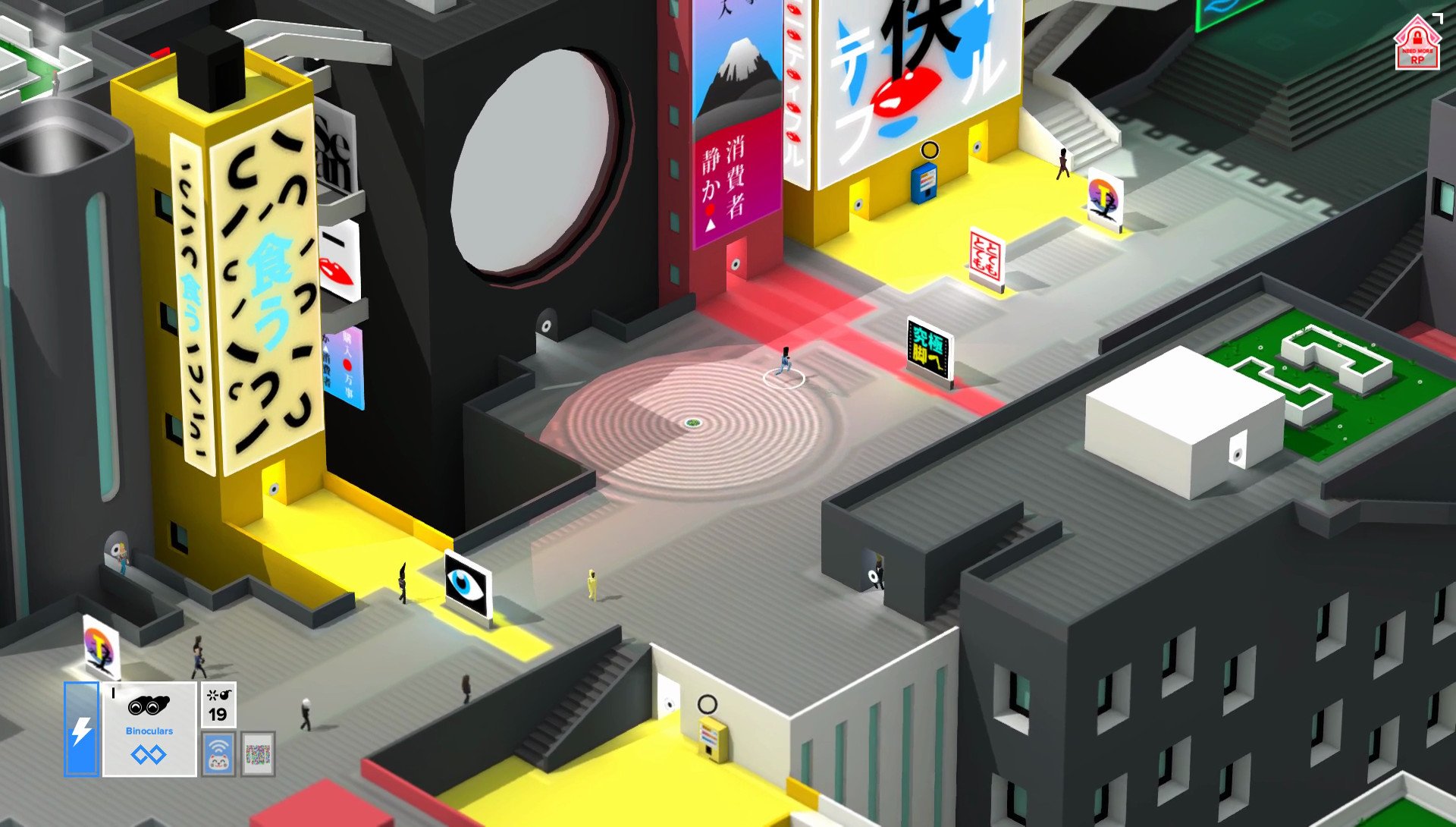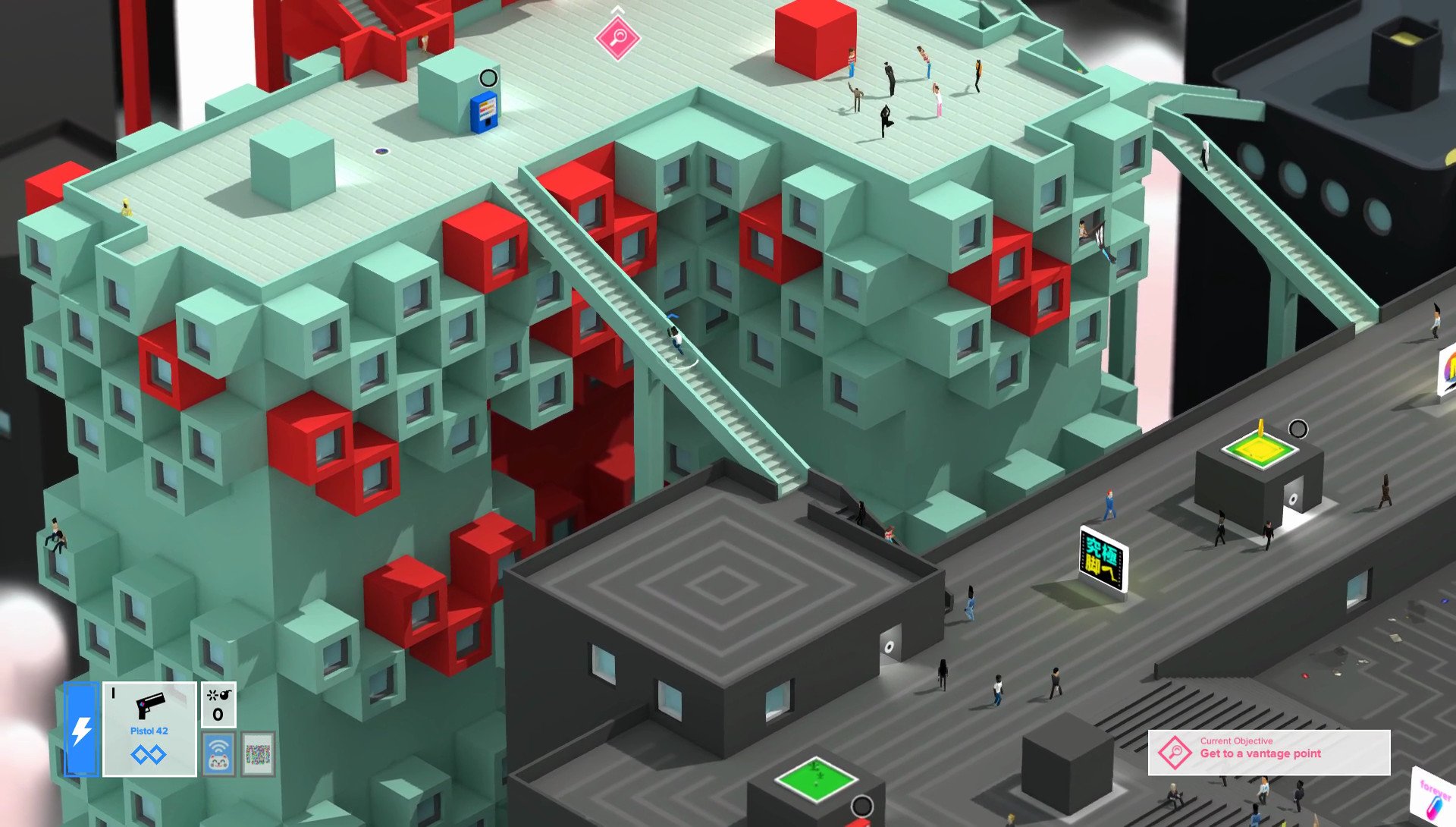Tokyo 42 for Xbox One and PC spotlights the beauty of simplicity
Even with its complexities, Tokyo 42 shows the magic of minimalism in gaming.


Defined heavily by its approach to visual design, Tokyo 42 immediately stands out for the unique style of its world. Despite capturing the bustling streets of Japan in remarkable simplicity, the game still reflects a strong attention to detail in the approach to its set pieces. Bringing together this sleek art style in conjunction with equally streamlined gameplay, Tokyo 42 managed to carve out a clear following almost solely through its presentation.
We managed to go hands-on with Tokyo 42 at the Games Developer's Conference (GDC) 2017, getting a closer look at the title before its release on Xbox One and PC. Here's what to expect from Tokyo 42 when it arrives in the coming months.
Less is more
Despite capturing the bustling streets of Japan in remarkable simplicity, the game still reflects a strong attention to detail.
After being framed for murder, players are thrown into the role of an assassin in Tokyo 42's world. Over the course of the game, you explore the criminal underworld thriving with this vibrant take on near-future Tokyo, uncovering a conspiracy that plagues the city.
As appealing as its isometric format can be, a twin-stick shooter underlies Tokyo 42's aesthetics. Capturing the busy streets of Japan through a map of interconnected rooftops, the game merges its action and platforming mechanics into a lively open world. This makes for a range of interesting concepts, built on strong gameplay mechanics.
With obvious influences from modern Asian culture, Tokyo 42's dynamic cityscapes are at the center of its appeal. With help from one developer's architectural background, the game's handcrafted world has been tailor-made to embrace fascinating structures and vibrant color palettes. Even the accompanying music encompasses similar influences, mixing electronic beats with traditional eastern sounds.

Snappy sharpshooting
Delivered in a 3D isometric perspective, Tokyo 42 offers a modern take on a classic viewpoint in video game design. Although isometric games are less common on today's hardware, the game brings back this style, with a unique twist. With the ability to switch between viewpoints on the fly, players can toggle the camera's position in 45-degree increments, using the two bumpers on the Xbox One controller.
This idea also feeds into the combat and platforming aspects of Tokyo 42, by providing eight different angles when surveying the battlefield. This can hugely change how the city is perceived, with the potential to open new approaches to combat.
All the latest news, reviews, and guides for Windows and Xbox diehards.
Whether you take a stealthy approach to missions or charge in guns blazing, every aspect of Tokyo 42's gameplay feels equally streamlined. From its tight controls to near-instantaneous load times, there's a notable efficiency to even the smallest in-game tasks. And with the complexities of the game's world, its slick approach makes for a truly polished product.

Every aspect of Tokyo 42's gameplay feels equally streamlined.
For an indie game of its size, Tokyo 42 also promises a significant amount of content to satisfy its player base. While an undeniable focus is placed on the single player story mode, the game's open world approach also accommodates a slew of additional side missions.
A "Where's Waldo?" style multiplayer mode is also making its way into the final experience, utilizing some of the game's stealth mechanics. Like the online segment of Assassin's Creed, players must blend into the city's crowds while hunting down their opponents. This looks to be an interesting extension of the base game, despite not having the longevity of more multiplayer-focused indie titles.
Tokyo 42 stands out to most gamers from the outset, simply for the pure eye candy found in its world. With a strong emphasis on offering a smooth experience, the game delivers an interesting take on the twin-stick shooter formula. Its stylized direction looks be an appealing premise, with the potential to catch the eyes of many gamers.
Make sure to keep it locked to Windows Central for more information on Tokyo 42 in the months before launch.

Matt Brown was formerly a Windows Central's Senior Editor, Xbox & PC, at Future. Following over seven years of professional consumer technology and gaming coverage, he’s focused on the world of Microsoft's gaming efforts. You can follow him on Twitter @mattjbrown.

